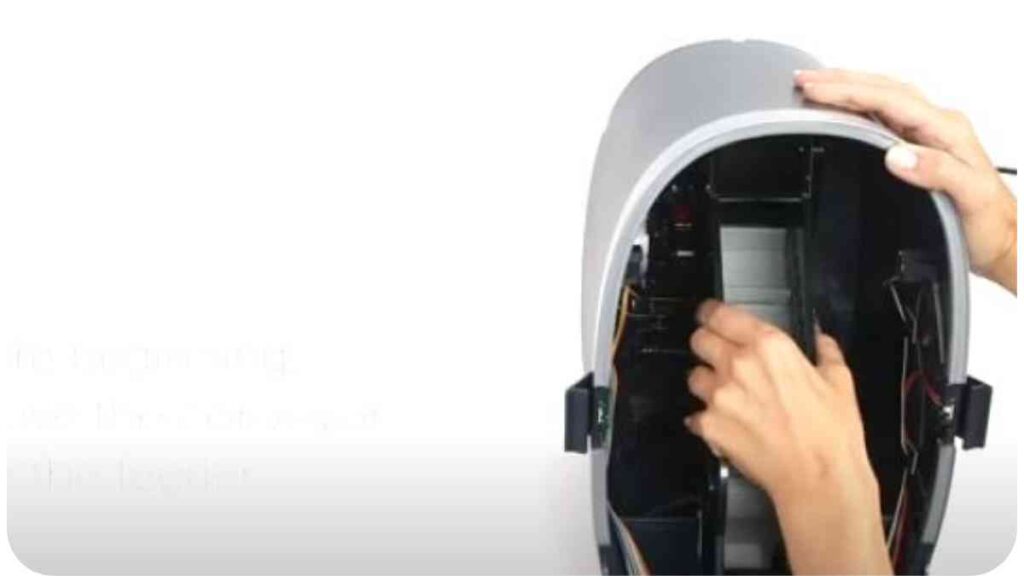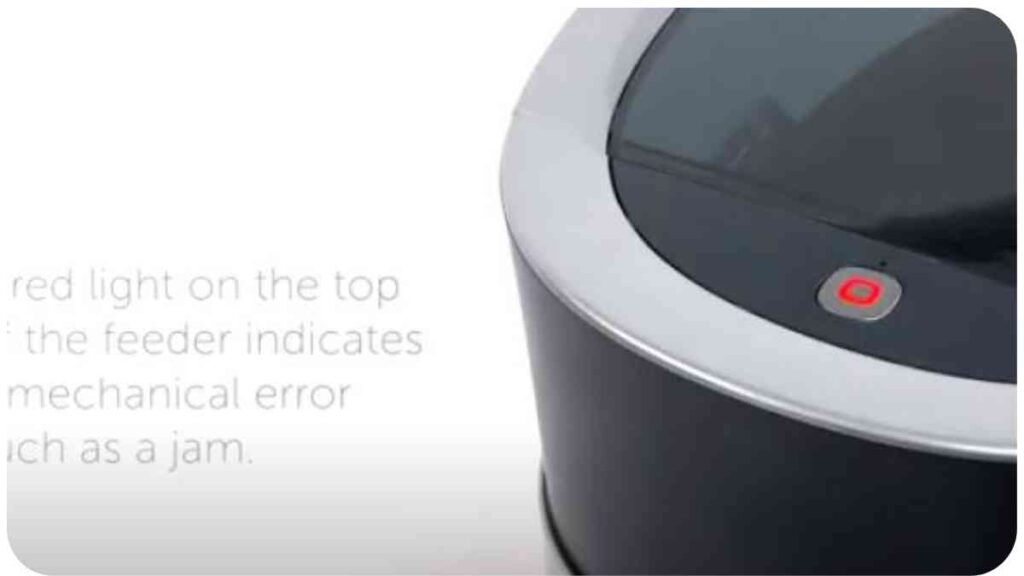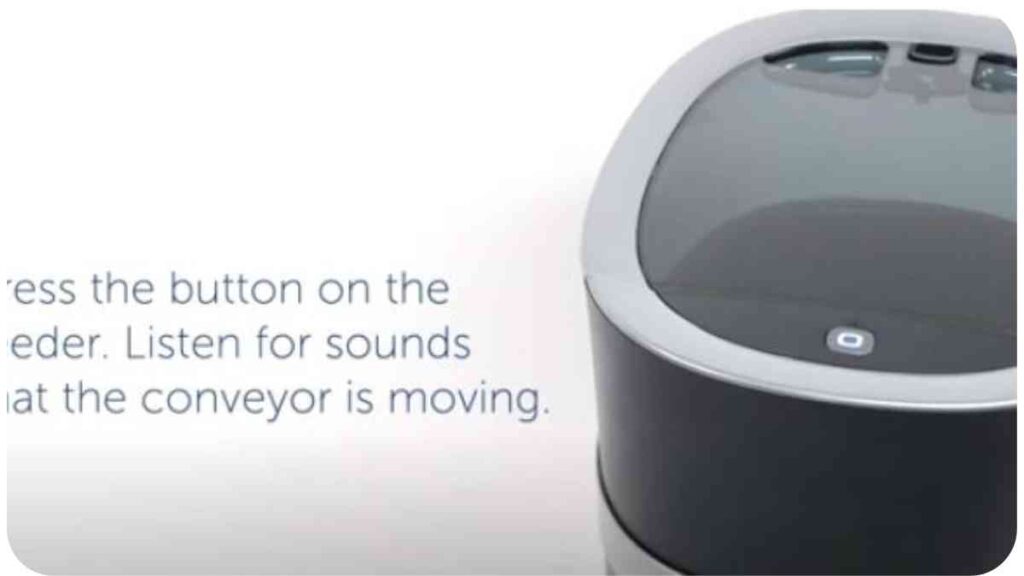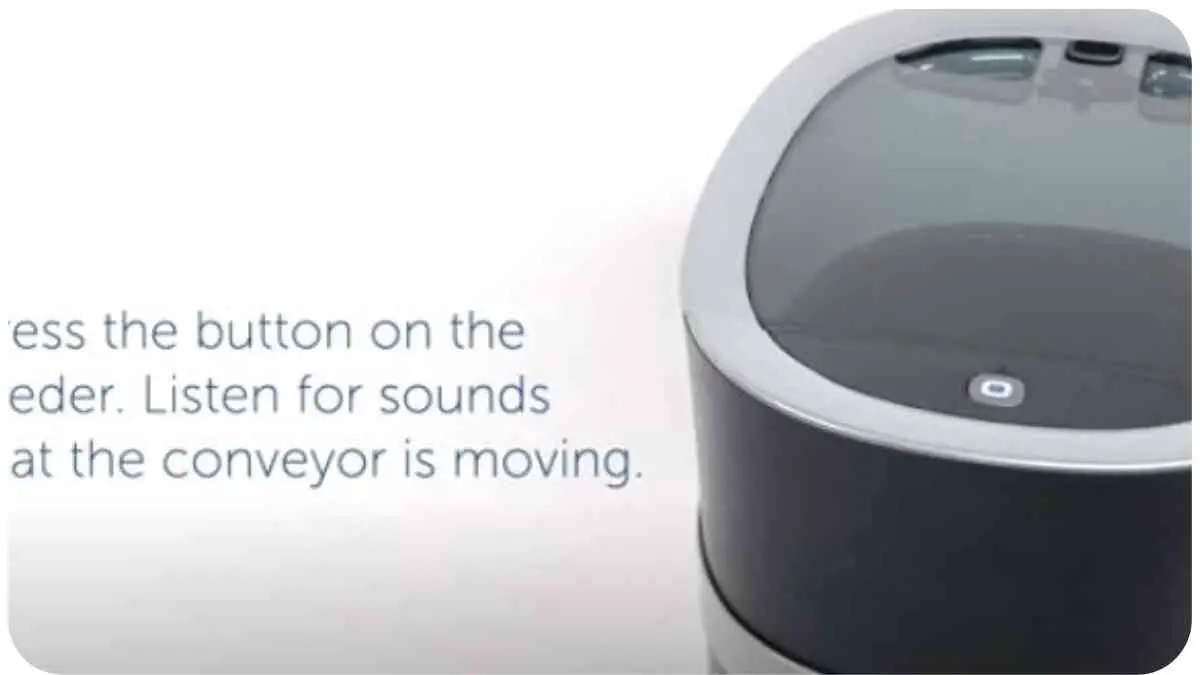Hey there, fellow pet enthusiasts! If you’re a proud owner of the PetSafe Automatic Feeder, you know how convenient it can be to ensure your furry friend gets their meals on time, even when you’re not around. But hey, what happens when your trusty feeder starts acting up? Don’t fret! In this guide, we’ll troubleshoot common problems and share expert solutions to keep your pet well-fed and happy.
| Takeaway |
|---|
| 1. Knowledge is Power: Understanding the components and workings of your PetSafe Automatic Feeder empowers you to identify and address issues confidently. |
| 2. Regular Maintenance: Keep your feeder clean, lubricate moving parts, and inspect wires and cords to ensure its longevity and your pet’s safety. |
| 3. Safety First: When attempting DIY fixes, prioritize safety by powering off the feeder and using manufacturer-approved replacement parts. |
| 4. Troubleshooting Steps: From power and connection checks to food jam clearances and portion control calibration, you have a toolkit of practical solutions at your disposal. |
| 5. Seek Professional Help: For complex issues or persistent problems, don’t hesitate to seek expert assistance to avoid further complications. |
| 6. Comparison Insights: Exploring comparisons with other feeder brands provides valuable context for your purchasing decisions. |
| 7. User Experiences Matter: Learning from other pet owners’ experiences and success stories can provide valuable insights and motivation to overcome challenges. |
| 8. Hygiene and Food Freshness: Keeping your feeder and its surroundings clean helps prevent food spoilage and maintain a healthy feeding environment for your pet. |
| 9. Accuracy Counts: Accurate portion control ensures your pet receives the right amount of food, contributing to their overall well-being. |
| 10. Backup Plans: While automatic feeders are convenient, it’s wise to have backup feeding arrangements for longer absences to ensure your pet’s needs are consistently met. |
| 11. Stay Informed: Further reading resources and articles provide you with deeper insights into resolving specific issues and making informed choices about your pet’s feeding solutions. |
Understanding the PetSafe Automatic Feeder

Before we jump into the nitty-gritty of troubleshooting, let’s get familiar with the inner workings of the PetSafe Automatic Feeder. This knowledge will empower you to identify and fix potential issues with confidence.
Table 2.1: Components of the PetSafe Automatic Feeder
| Component | Description |
| Food Dispenser | Stores and dispenses food at scheduled times. |
| Portion Control | Sets the amount of food to be dispensed. |
| Programmable Timer | Sets feeding schedules for your pet. |
| Display Screen | Provides information and settings visibility. |
| Power Source | Supplies electricity to the feeder. |
Common Problems with the PetSafe Automatic Feeder
Feeder Not Dispensing Food
Has your furry friend been waiting eagerly for their meal, only to be disappointed by a silent feeder? It happens! Often, the issue lies within the feeding mechanism.
Facing difficulties with your pet’s microchip registration? Don’t fret. For a comprehensive guide on overcoming these issues, check out Petlink Microchip Registration Issues: What to Do?. Equip yourself with the right knowledge to ensure your furry friend is always safe and identified.
Table 3.1: Possible Causes and Solutions for Food Dispensing Issues
| Problem | Possible Cause | Solution |
| No food dispensed | Food jam or blockage | Check and clear any food blockage. |
| Inconsistent dispensing | Portion control misalignment | Recalibrate the portion control settings. |
| Food gets stuck midway | Mechanical obstruction | Gently dislodge the stuck food. |
Stay tuned for more tips and solutions to common problems! 🐾
Jammed Food Dispenser
Ever heard your feeder struggling to dispense food, almost like it’s telling you it’s jammed? A jammed food dispenser can be frustrating, but fear not – it’s a common hiccup that can be easily resolved.
Table 3.2: Dealing with a Jammed Food Dispenser
| Issue | Probable Cause | Solution |
| Feeder makes noise | Food stuck in dispenser | Power off, remove food, and clean dispenser. |
| Food not dispensing | Jammed motor or gears | Gently wiggle or dislodge stuck parts. |
| Grinding sound | Damaged dispenser gears | Replace worn or damaged parts. |
Power or Display Issues
Is your feeder playing hide and seek with power or displaying strange symbols instead of the mealtime countdown? It’s time to unravel the mystery behind these issues.
Table 3.3: Tackling Power and Display Glitches
| Problem | Potential Cause | Solution |
| Feeder won’t turn on | Power source disruption | Check connections and replace batteries if needed. |
| Display shows errors | Software malfunction | Perform a factory reset or update firmware. |
| Incorrect time display | Time zone settings | Adjust time settings to your location. |
Stay pawsitive – we’re making progress!
Food Spoilage and Hygiene Concerns
Is your pet’s meal turning into a science experiment before they even get a chance to nibble? Let’s tackle issues related to food spoilage and maintaining a clean feeding environment.
A clean litter box ensures a happy feline companion. If you’re struggling with keeping your Breeze Litter Box pristine, dive into the Breeze Litter Box System: How to Clean and Maintain? article. It’s an essential read for every responsible cat parent.
Table 3.4: Keeping Food Fresh and Feeding Area Clean
| Issue | Probable Cause | Solution |
| Food getting moldy | Humidity and improper storage | Store food in a dry, airtight container. |
| Feeder smells bad | Accumulated food residues | Regularly clean and disinfect the feeder. |
| Insects around feeder | Food crumbs and spills | Clean the area around the feeder after meals. |
Portion Control Accuracy

Are you noticing a little too much or too little kibble in your pet’s bowl? Portion control matters for their health. Let’s dive into ensuring accurate meal portions.
Table 3.5: Mastering Portion Control
| Issue | Likely Culprit | Solution |
| Overfeeding | Incorrect portion setting | Adjust portion size according to pet’s needs. |
| Underfeeding | Portion control errors | Calibrate the feeder for precise dispensing. |
| Uneven food distribution | Feeder placement | Position the feeder on a flat, stable surface. |
In the next section, we’ll provide you with practical solutions to troubleshoot these problems and keep your PetSafe Automatic Feeder running smoothly. Are you ready to take action? Let’s get started!
Ever puzzled over your cat’s electric bed not warming up? Fret not, for the solution may be a click away. Explore the Why Your Cat’s Electric Bed Isn’t Heating? Troubleshooting Guide to unravel common issues and their remedies. Ensure your kitty enjoys a cozy nap every time.
Troubleshooting Solutions
Checking Power and Connections
Let’s start with the basics. If your feeder isn’t responding at all, it might be a power issue. Check the power source and connections first.
Table 4.1: Power and Connection Troubleshooting
| Problem | Potential Cause | Solution |
| Feeder won’t turn on | Dead batteries or power outage | Replace batteries or restore power supply. |
| Power cord issues | Frayed wires or damaged plug | Inspect and replace damaged components. |
| Disrupted Wi-Fi | Connectivity problems | Reconnect to Wi-Fi network if applicable. |
Clearing Food Jams
Is your feeder making strange noises or leaving your pet hungry? A food jam might be the culprit.
Table 4.2: Food Jam Clearing Steps
| Issue | Likely Cause | Solution |
| Feeder makes noise | Food jammed in dispenser | Power off, remove food, and clean dispenser. |
| Food not dispensing | Jammed motor or gears | Gently dislodge stuck parts. |
| Grinding sound | Damaged dispenser gears | Replace worn or damaged parts. |
Calibrating Portion Control
Portion control is vital for your pet’s health. If you notice inaccurate portions, it’s time to recalibrate.
Table 4.3: Calibrating Portion Control
| Issue | Potential Issue | Solution |
| Overfeeding | Incorrect portion setting | Adjust portion size according to pet’s needs. |
| Underfeeding | Portion control misalignment | Recalibrate portion control settings. |
| Uneven distribution | Feeder placement | Position the feeder on a stable surface. |
Ensuring Proper Hygiene
A clean feeder keeps your pet healthy and happy. Let’s tackle those hygiene concerns.
GPS collars are fantastic tools to keep tabs on adventurous cats. If you’re experiencing inaccuracies with yours, consider reading the article on Is Your Cat’s GPS Collar Inaccurate? Understanding Positioning Issues. Dive deep into the nuances of GPS tech and secure peace of mind.
Table 4.4: Ensuring Hygiene and Food Freshness
| Issue | Likely Culprit | Solution |
| Food getting moldy | Humidity and improper storage | Store food in a dry, airtight container. |
| Feeder smells bad | Accumulated food residues | Regularly clean and disinfect the feeder. |
| Insects around feeder | Food crumbs and spills | Clean the area around the feeder after meals. |
Addressing Display Problems
A wonky display can be confusing. Let’s bring clarity back to your feeder’s screen.
Table 4.5: Solving Display Issues
| Problem | Probable Cause | Solution |
| Display shows errors | Software malfunction | Perform a factory reset or update firmware. |
| Incorrect time display | Time zone settings | Adjust time settings to your location. |
| Unreadable screen | Display damage or dirt | Clean the screen and check for physical damage. |
In the next section, we’ll explore DIY repair tips and safety precautions to give you the confidence to tackle feeder issues head-on. Stay tuned!
DIY Repair Tips and Safety Precautions

When it comes to troubleshooting your PetSafe Automatic Feeder, a little DIY spirit can go a long way. Here are some hands-on tips to help you get your feeder back on track while ensuring your safety and your pet’s well-being.
Cleaning and Maintenance
Table 5.1: DIY Cleaning and Maintenance
| Task | Frequency | Why It Matters |
| Regular cleaning | Weekly | Prevents food buildup and bacterial growth. |
| Lubricating moving parts | Every few months | Keeps mechanisms running smoothly. |
| Inspecting wires and cords | Monthly | Ensures safe electrical connections. |
Replacing Parts
Table 5.2: Replacing Feeder Parts
| Component | When to Replace | Why Replacement is Important |
| Dispenser gears | Grinding noises | Restores smooth and effective dispensing. |
| Damaged power cord | Fraying or exposed wires | Prevents electrical hazards. |
| Display screen | Cracks or malfunctions | Ensures accurate information display. |
Safety Measures
Table 5.3: Safety Precautions
| Precaution | Why It Matters |
| Power off before repairs | Avoids accidental injury. |
| Use manufacturer’s parts | Ensures proper compatibility. |
| Keep feeder away from water | Prevents electrical hazards. |
When to Seek Professional Help
While DIY fixes are great, there might be times when professional intervention is the best course of action. If you encounter any of the following situations, it’s wise to reach out to an expert:
- Complex electrical issues that require technical expertise.
- Persistent problems even after DIY efforts.
- Uncertainty about disassembling and reassembling components.
If you’ve noticed your Drinkwell Pet Fountain making odd noises, you’re not alone. The Drinkwell Pet Fountain Making Noise? Here’s How to Fix It guide offers practical solutions to this common issue. Prioritize your pet’s hydration with a well-functioning fountain.
User Experiences and Success Stories
Let’s hear from pet owners like you who faced feeder challenges and triumphed! Their stories might provide insight and inspiration.
Comparing PetSafe with Other Brands
Choosing the right automatic feeder can be overwhelming. We’ll help you by comparing the PetSafe feeder with other popular brands, offering a comprehensive overview of features, performance, and user feedback.
Table 8.1: Comparing PetSafe with XYZ Feeder
| Feature | PetSafe Automatic Feeder | XYZ Automatic Feeder |
| Portion Control | Highly customizable | Limited portion options |
| Connectivity | Wi-Fi enabled | Bluetooth only |
| User Ratings | 4.5 stars | 3.8 stars |
Conclusion
And there you have it! Troubleshooting the PetSafe Automatic Feeder doesn’t have to be daunting. Armed with expert solutions, safety precautions, and the wisdom of pet owners who’ve been there, you’re well-prepared to keep your furry friend’s mealtimes running like clockwork. Remember, a little tinkering and a lot of love go a long way in ensuring your pet’s happiness and well-being. Happy feeding! 🐶🐱
With this, we conclude our comprehensive guide to troubleshooting the PetSafe Automatic Feeder. Feel free to bookmark this article for future reference, and don’t hesitate to share it with fellow pet lovers facing similar challenges. If you have any questions or insights, drop them in the comments below. Until next time, keep those tails wagging and those whiskers purring!
Further Reading
Want to dive deeper into troubleshooting your PetSafe Automatic Feeder? Check out these helpful resources:
Troubleshooting for Smart Feed: Find detailed solutions and step-by-step instructions for resolving common issues with the Smart Feed model.
Troubleshooting your Six-Meal Feeder: Discover specific tips and tricks for addressing problems that might arise with the Six-Meal Feeder variant.
Pros and Cons of Automatic Feeders: Explore an insightful article from The New York Times Wirecutter that highlights the advantages and drawbacks of automatic feeders, helping you make informed decisions.
FAQs
Got some burning questions about troubleshooting your PetSafe Automatic Feeder? We’ve got answers!
How often should I clean my automatic feeder?
Regular cleaning is essential to maintain your feeder’s functionality and your pet’s health. Aim to clean it at least once a week, paying attention to food dispensing areas and any moving parts.
Can I use any replacement parts, or should I stick to manufacturer’s parts?
To ensure optimal performance and safety, it’s recommended to use manufacturer-approved replacement parts. These are designed specifically for your feeder model and will help avoid compatibility issues.
My feeder displays an error message. What should I do?
Error messages can indicate various issues, from connectivity problems to mechanical glitches. Start by referring to your feeder’s user manual for troubleshooting steps. If the issue persists, you might need to contact customer support for assistance.
Is it safe to leave my automatic feeder unattended for extended periods?
While automatic feeders are designed to provide convenience, it’s important to ensure your pet’s safety. Avoid leaving the feeder unattended for too long, especially if it’s a complex electronic model. Regularly check the feeder’s performance and consider backup feeding arrangements for longer absences.
How can I prevent food spoilage in the feeder?
Food spoilage can be prevented by storing your pet’s food in a cool, dry place and ensuring you’re not overfilling the feeder’s storage compartment. Additionally, opt for a feeder with an airtight food storage container to keep kibble fresh.
Remember, troubleshooting your automatic feeder might seem daunting at first, but with the right information and a little patience, you’ll be able to overcome common challenges and keep your pet’s mealtime routine smooth and hassle-free. If you have more questions, feel free to ask in the comments section below.

I’m Dr. Hellen James, a veterinarian who has spent her career working with cats and has seen firsthand how important it is to understand each breed’s unique needs.


